Are We Covering or Are Students Discovering?
By Diana Fenton and Nancy Van Erp
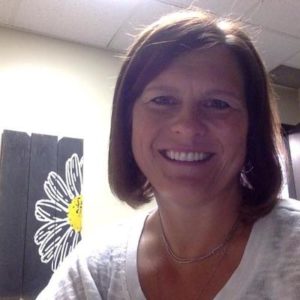
Diana Fenton
As parents who are also teachers, we pay special attention to the study guides and homework that come home with our children.
Recently, a study guide for a fourth grade Social Studies exam highlighted ideas as disconnected as “empire,” “oral history,” and “pyramid” and concepts like “the first cities that were part of Mesopotamia,” “ghost towns are towns that have been deserted,” and “a hurricane changed Galveston, Texas in the 1900’s” without any explicit connection drawn between them or a unifying big idea or concept articulated around them.
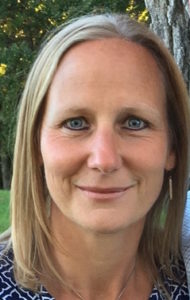
Nancy Van Erp
When the fourth grade daughter was questioned about what she had done in class to learn about the ideas on the study guide, she couldn’t name anything except to say that the class had read about them in the textbook. Needless to say, her grasp of any of the disparate ideas highlighted on the study guide was minimal or, at worst erroneous, as illustrated by her definition of an “empire” as “someone who officiates a softball game.”
Practices of putting together unrelated discrete facts without any unifying big ideas to organize and tie them together is not unique to this classroom or teacher; it is the reality of many classrooms today.
It is also indicative of a curriculum that is driven by chapters in a textbook and not powerful and intentional standards-based lesson planning made possible through frameworks like Wiggins and McTighe’s (2005) Understanding by Design model.
Textbooks are resources, not curriculum
A common misconception exists among administrators and teachers that the textbook is the curriculum and consequently contains all of the lessons in sequence that one must teach in any given year. The year begins on page one and the goal is to get it all “covered” by the end of the year.
Rather than simply covering the content, teachers should be allowing learners to discover the content. Thoughtful and careful standards-based unit and lesson planning is critical to meet the diverse needs of the learners in our classroom today – not sole reliance on a textbook.
Even if teachers enter the profession with the knowledge of sound pedagogical practices, there is a disconnect when they are handed a textbook. The pressure to follow the text has driven out the best practice of designing lessons to meet the content standards and the needs of students.
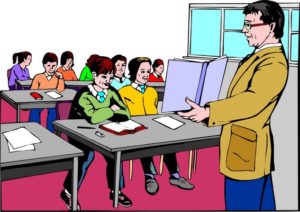
Textbooks are indeed rich resources of content that are organized with many activities that can be used to teach students. But close examination and critical thinking are required to see if all of the content meets the standards for your state, content area, and grade level.
Most important, we need to be sure to design lessons that focus on students learning rather than teachers teaching. As Marlowe and Page (2005) explain, we must shift our focus from “how should I teach this?” to “how can my student or students best learn this?”.
It’s about understanding
A shift in our perception of what it means to be a teacher changes everything. Simply put, our role as teachers is not to deliver information but to ensure understanding.
Anyone can say they’ve taught x, y, or z if teaching only means “to deliver content.” Who among us, however, can say we’ve taught something if that means we’ve ensured understanding for every student? Embracing that responsibility changes how we go about planning for learning, especially since we face a myriad of challenges each time we engage with our diverse learners and complex content.
The best way to ensure understanding is not to march through a textbook arranged by someone else’s arbitrary reasoning about how things fit together. Instead, we create thoughtful standards-based units and lessons which plan for meaningful engagement with concepts identified in the standards, which are assessed along the way, and which are aligned with inquiry-driven practice and performance tasks that are relevant to the students.
Three stages of lesson design
In standards-driven units and lessons, textbooks are used as resources – as information to explore – that can supplement the rest of the exploration that is occurring around big ideas communicated in kid friendly language.
Erickson (2006) championed the idea of concept-based instruction, which expands on and bolsters the work of Wiggins and McTighe (2005). This approach provides a clear path, tools, and the mindset necessary to plan for connected and meaningful learning with three stages of design:
- identifying big ideas and standards to be addressed,
- aligning and creating formative and summative assessments to check for understanding of those big ideas, and
- planning for the day-to-day instructional strategies and discovery of content to construct meaning and true understanding.
Big ideas and new understandings

This approach does nothing to relate the content to students’ lives or construct meaning around the unit’s concepts. Instead they’ve relied on a magical and mystical passive absorption of content which simply doesn’t happen. Such efforts focus more on “teaching” content than ensuring understanding.
Big ideas and essential questions are part of stage one of the unit design (Wiggins & McTighe, 2005) and they are a salient part of a powerful and intentional lesson planning practice. Let’s look at a Minnesota state standard for fourth grade Social Studies which involves using geographic inquiry to gather, organize, and analyze information to solve problems and plan for the future.
First, we need to develop a question that we want students to be able to answer to demonstrate that they understand this standard. The essential question should be a question that generates additional questions and sparks interest in ways that help students deepen their thinking.
We also articulate a big idea, which for this unit might be Water is essential for human life. An accompanying essential question might be What are we going to do when we run out of water? These ideas are written in kid friendly language and can be referenced throughout the unit as students uncover ideas and construct meaning around the content.
Students can connect to the ideas because they all use water and they know that water is a requirement for life on Earth. The diverse experiences and backgrounds of students in our classrooms enriches the discussion of the concept because water is not in abundance for all populations even though other people may think the supply is unlimited.
Uncovering the content while assessing for understanding
Once essential questions and big ideas have been articulated, even more uncovering of the content can begin. Wiggins and McTighe (2005) and constructivist thinkers like Brooks and Brooks (1999) and Marlowe and Page (2005) have long advocated for “uncoverage“ of content versus the typical coverage model that is part of the “textbook is the curriculum” mindset.
Brooks and Brooks explain that big ideas are better for structuring lessons than small discrete facts because the “wholes” inherent in the big ideas help students determine how things fit together. An uncoverage mindset lends itself naturally to inquiry and the practice of asking questions, including essential questions, that are focused on big, lifetime enduring ideas.
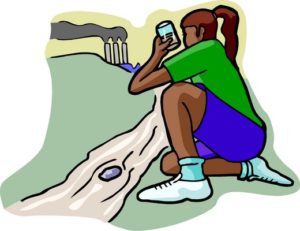
While students can read and find information on this topic, a powerful lesson can involve student-led discussions and collaborative groups that share out information they discovered on their own. Students can generate maps to visually display where pollution has occurred near their school and learn about what has been done or needs to be done to clean up pollution. Those ideas can then be extended beyond one geographic area to the entire world.
Students can also investigate what areas of the world have a water shortage and analyze the strategies other geographic regions are using to obtain water. To deepen understanding and make further connections, students can compare their own personal water consumption and conservation by recording water usage for a week. The water usage calculations of the class could be incorporated in a math lesson and students apply these concepts and teach others about water conservation by creating public awareness pieces using video production.
Lastly, students can design a method to clean up polluted water using the engineering design process, building prototypes and testing methods to clean water that could be used around the world while incorporating both peer and teacher feedback as the students modify and adjust their projects.
Assessments along the way
One might ask where the assessment comes into play, but the ideal is that the assessments are seamless along the way and not an “event” at the end of the learning. Brooks and Brooks (1999) explain that students should be assessed in the “context of daily classroom investigations, not as separate events” (p. 21) and that assessment should be ongoing, both formative and summative, and happening every day and in many different ways.
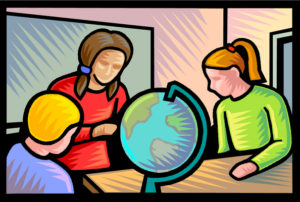
The power in designing lessons with big ideas in mind and ensuring understanding, rather than following a textbook, is that learning flows from the students’ discovery. While we can find some interdisciplinary approaches in textbooks, such approaches often expand to only one or two other content areas and they often lack extended inquiry activities that help students construct meaning.
While some may argue that such an approach takes more time and will prohibit the “coverage” of all the standards, others could argue that having an enduring understanding of two-thirds of the standards is better than cursory exposure to disparate ideas that were covered but not learned.
Having creative confidence
Teachers have the responsibility of shifting the focus from delivering content to creating a learning environment where students can uncover their own understanding.
While it might feel risky for teachers to let go of telling students what they need to know, it is possible to opt for discovery and meaning-making with big idea and standards-based lesson planning that uses the textbook as a resource, not as the curriculum. Such an approach shifts the creativity, confidence, and ability to collaborate, all of which are desired characteristics of 21st century learners and doers.
Teachers need to have the creative confidence to change how they teach and how they plan, which is something Kelley and Kelley (2013) describe as the “do something” mindset. Teachers need to move beyond believing that changes in lessons and teaching can make a difference, to actually making the changes.
If we don’t start planning in this way, we risk something far worse than less “coverage” – we risk students who have not learned anything but have merely been exposed to ideas “taught” to them.
References
Brooks, M.G., & Brooks, J.G. (1999). The courage to be constructivist. Educational Leadership, 57(3), 18-24.
Erickson, H.L. (2006). Concept-based curriculum and instruction for the thinking classroom. Thousand Oaks, CA: Corwin Press.
Kelley, T., & Kelley, D. (2013). Creative confidence: Unleashing the creative potential within us all. New York, NY: Crown Business.
Marlowe, B.A., & Page, M.L. (2005). Creating and sustaining the constructivist classroom (2nd ed.). Thousand Oaks, CA: Corwin Press.
Wiggins, G., & McTighe, J. (2005). Understanding by design (Expanded 2nd ed.). Alexandria, VA: ASCD.
Diana Fenton is an educator with 15 years of experience teaching middle level science and college courses. She is currently working in teacher preparation at the College of St. Benedict and St. John’s University, both in Minnesota, and with practicing professionals in the Master of Education in Learning Design and Technology program at Saint Mary’s University of Minnesota. Connect with her on Twitter @dianafenton1.
Nancy Van Erp is a former middle and high school Spanish teacher who currently serves as program director and adjunct faculty for the online Master of Education in Learning Design and Technology program at Saint Mary’s University of Minnesota. Connect with her on Twitter @IfNotUsThnWho.


































